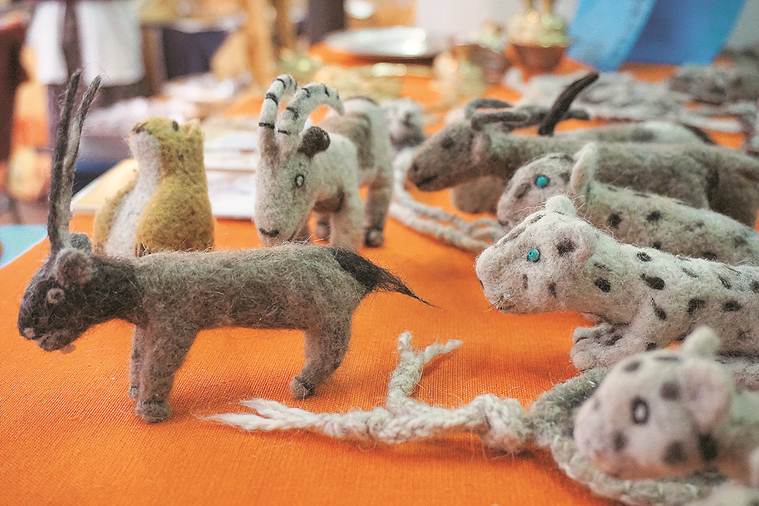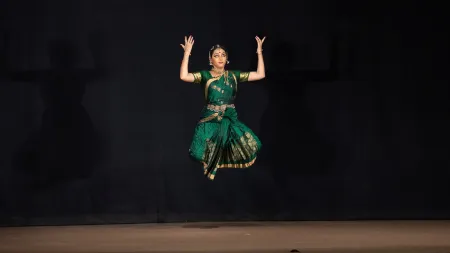- India
- International
The annual craft bazaar by Dastkari Haat Samiti features traditional Indian and Bangladeshi crafts
Designer Kalpana Das from West Bengal has rendered a modern twist to the gamchha — a traditional cotton towel with checked designs — by turning it into contemporary dresses, skirts, jackets, earrings, necklaces and table runners.
 Birds made by artist Trilok Thakur
Birds made by artist Trilok Thakur
For the last two years, Shwettaj Jahan Tithi from Dhaka has been diligently working with Rohingya refugees to create colourful table mats using their local weaving techniques. She has also worked with over 300 sex workers from the red light areas in Narayanganj, Bangladesh, where she taught them kantha embroidery and weaving techniques. She points out that the tiny dolls made by them can be used as decorative pieces or be pinned to garments.
She is one of the participants at the 34th edition of the annual craft bazaar organised by Dastkari Haat Samiti. It features crafts from Bangladesh and has over 170 stalls that also showcase the myriad traditions of India.
 Products from Ladakh
Products from Ladakh
Designer Kalpana Das from West Bengal has rendered a modern twist to the gamchha — a traditional cotton towel with checked designs — by turning it into contemporary dresses, skirts, jackets, earrings, necklaces and table runners. Das feels that with power looms overpowering handlooms, many gamchha weavers have faded into oblivion. “Artisans specialising in this artform are dwindling. I know of girls who have moved to cities to earn a living,” says Das. Jaya Jaitly, founder of Dastkari Haat Samiti, says, “Our annual craft bazaar is 15 days of calling craftspeople whom we work with throughout the year, where we give them new ideas and help them develop their skills. This gives them an opportunity to directly connect with the customers. It’s an attempt at showing that this is how Dilli Haat is supposed to be all the time.”
Tahira Begum, 60, hailing from Bogura in Bangladesh, points out that the motifs of fish, flowers and leaves that she has used on the saris, bedsheets and stoles — using kantha embroidery — bear common resonance with the kantha embroidery of West Bengal. Begum learnt the art from her grandmother as a child, and notes how only the techniques differ in both variants. She says, “When Bangladesh was separated from Pakistan in 1971, there was an economic crisis. In order to make the women in the newly-formed nation self-sufficient, I decided to train them in kantha.”
Subhash Gidwani is selling the dolls native to the tribal district of Jhabua in Madhya Pradesh. These lend an insight into the tribals’ way of living, clothing and culture. “The special quality of these handamde dolls is that they are made entirely of cloth, cotton and wires,” says Gidwani. Bird lovers can also head to the shop set up by Ujjain-based artist Trilok Thakur, who has arrived with papier-mache versions of the birds featured in Indian ornithologist Salim Ali’s The Book of Indian Birds (1941). The showcase ranges from house sparrows and bulbul to the kingfisher, made from discarded paper. He also exports these.

Forty two-year-old Thering Angmo has brought products from Himya village from Ladakh. There are socks and toy versions of the animals found in Ladakh, including the Asiatic ibex and snow leopard, made from sheep wool. Her stall is a part of Snow Leopard Conservancy India Trust’s initiative that promotes Ladakhi art and culture through the works of artisans living in the remotest parts of Ladakh.
The craft bazaar is on till January 15
More Lifestyle
Apr 19: Latest News
- 01
- 02
- 03
- 04
- 05


































